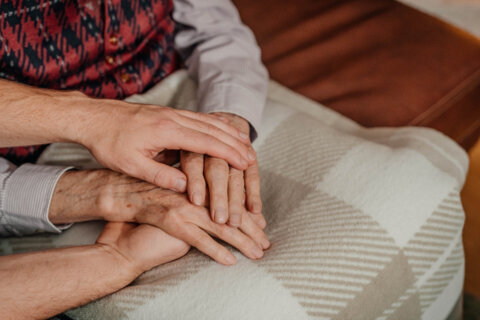Johns Hopkins University researchers examining how quickly pills digest have figured out that your body’s position can quicken things up or slow them down.
It has to do with gravity.
“Stomachs are a ‘J’ shaped organ,” said Rajat Mittal, a professor of mechanical engineering and medicine at Johns Hopkins University. “They have a little curvature at the bottom … and that [curved] area is a great area for solid food and pills to get to, because that’s where all the grinding and the mixing of the stomach is most active.”
A study of the equations of fluid dynamics and pill movement in the stomach by Mittal and his colleagues determined that taking a pill while standing or sitting upright results in it getting dissolved fairly quickly but not as quickly as possible.

“It turns out that if you’re laying down on your right hand side, then the pill ends up even closer to where the action is in the stomach. It’s even closer to the exit to the intestine. And it actually dissolves even faster than if you were upright. It’s about 2.3 times faster, based on our models,” Mittal said.
If you take a pill laying on your left side, the combination of gravity and the shape of your stomach causes the pill to land in an area of the stomach where not much is happening to dissolve the pill.
“Some of our simulations showed that sometimes the pill can take 10 times as much time to dissolve as the other positions,” he said.
Lying on your on your back is comparable to sitting upright or standing up straight, the study found.
To conduct the study, Mittal built a mechanical stomach based on a CT scan of an adult male.
His degrees and areas of expertise are mostly in aerospace engineering, but he said physics are physics; the fluid in your stomach obeys the same physics as the air flowing over the wings of an aircraft.
“We take some of the tools that we have developed for application to aerospace engineering and marine engineering, and we have found that these tools actually allow us to really gain a lot of interesting insights when applied to physiology and the function of different organs in the body,” he said.
The National Institutes of Health funded the study, which was conducted to determine whether there was a better way to evaluate whether pills under review for federal approval dissolve the way manufactures claim.
Right now, “they’re using an apparatus, which is actually a very simple apparatus — it’s a beaker with a stirring paddle in the middle, and they drop the tablet in that beaker,” Mittal said. “This beaker with the paddle is meant to model what actually happens in the stomach. But it turns out the stomach functions extremely differently from that.”
The study findings have led to discoveries beyond what the researches were looking for — that Mittal finds applicable to daily life.
“Let’s say you have a late-night meal and you’re going to bed after that. Well, now I’m a lot more conscious about which side I turn on when I go to sleep after a heavy meal,” he said. “Because my simulations indicate that sleeping on your right side will actually help digest that meal a little bit faster than being on your left.”








